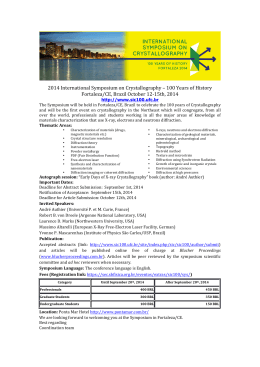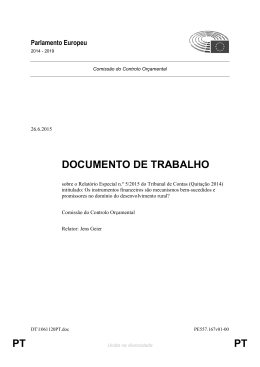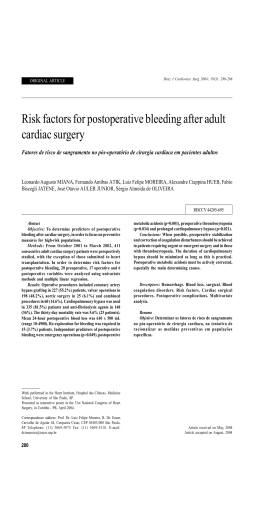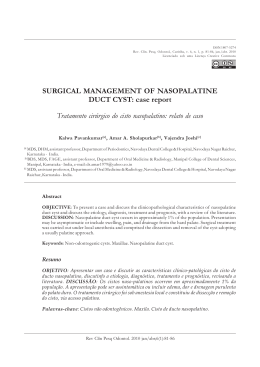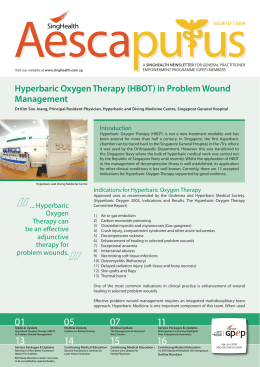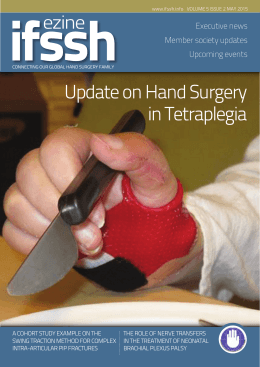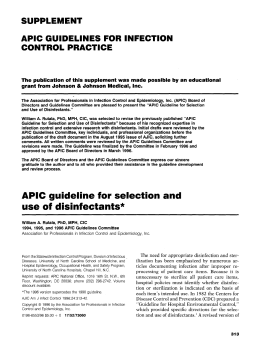| ORIGINAL ARTICLE | INSTRUMENTAL IN SURGICAL BOXES: COST EVALUATION* Instrumentais nas caixas cirúrgicas: avaliação de custo Instrumentos quirúrgicos: evaluación de los costos Julierme Rodrigo de Almeida Paula1, Rita de Cássia Rodrigues da Silva2, Cleuza Aparecida Vedovato3, Ana Paula Boaventura4 ABSTRACT: Objective: To evaluate the number of instruments in surgical boxes, which are not used during a surgery in a hospital in the state of São Paulo. Method: Data collection resulted from the direct observation of the instruments used in surgery, recording the actual number of instruments in the box, the number of instruments used in surgery, and the number of unused ones. Results: On an average, about 52% of existing materials in surgical boxes are not used, generating high costs for the institution. Calculating the losses, we obtained an average worth US$ 2.90 (R$ 8.00) per surgical box used, mounting up to the value of U$ 566 (R$ 1,584.17) per month. Conclusions: We conclude that there is a waste of materials, which are sterilized and not used in surgical procedures, directly reflecting the quality and the cost management of the sterilized material center. Keywords: Surgical instruments. Costs and cost analysis. Surgical procedures, operative. RESUMO: Objetivo: Avaliar o número de instrumentais das caixas cirúrgicas que não são utilizados durante as cirurgias, em um hospital do interior do Estado de São Paulo. Método: A coleta de dados resultou da observação direta dos instrumentais utilizados nas cirurgias, registrando o número real de instrumentais na caixa, número de instrumentais utilizados na cirurgia e número de não utilizados. Resultados: Em média, cerca de 52% dos materiais existentes nas caixas cirúrgicas não são utilizados, gerando custos elevados para a instituição. Calculando o desperdício, foi obtida uma média no valor de R$ 8,00 (oito reais) por caixa cirúrgica utilizada, podendo chegar ao valor de R$ 1.584,17 por mês. Conclusões: Conclui-se que há um desperdício de materiais que são esterilizados e não são utilizados nos procedimentos cirúrgicos, refletindo diretamente na qualidade e nos custos do gerenciamento do centro de material e esterilização. Palavras-chave: Instrumentos cirúrgicos. Custos e análise de custo. Procedimentos cirúrgicos operatórios. RESUMEN: Objetivo: Evaluar el número de instrumentos de cajas quirúrgicas que no se utilizan durante la cirugía en un hospital de una ciudad de la provincia de São Paulo. Método: La recolección de datos resultó de la observación directa de los instrumentos utilizados en la cirugía, registrando el número real de instrumentos, el número de los instrumentos utilizados en la quirugía, número no utilizado y no utilizado. Resultados: En promedio no se utilizan al rededor del 52% de los materiales existentes en las cajas quirúrgicas, generando altos costos para la institución. Calculando el desperdicio se obtuvo un promedio de valor de € 2,7 por caja quirúrgica utilizada, alcanzando el valor de €528) mensuales. Conclusiones: Se concluye que ocurre un desperdicio de material es que se esterilizan y no se utilizan en procedimientos quirúrgicos colocados en las cajas quirúrgicas influyendo directamente en la calidad y los costes de gestión de la Central de material y esterilización. Palabras clave: Instrumentos quirúrgicos. Costos y análisis de costo. Procedimientos quirúrgicos operativos. Nurse. Graduated from Fundação de Ensino Otávio Bastos. E-mail: [email protected] Nurse. Master in Health Sciences from Universidade Estadual de Campinas (UNICAMP). Professor in the Graduate Program in Nursing at Fundação de Ensino Otávio Bastos. E-mail: [email protected] Nurse. Master in Health Sciences from UNICAMP. Nurse at the Nursing School of UNICAMP. E-mail. [email protected] 4 Nurse. Doctor in Health Sciences from Universidade de São Paulo (USP). Professor in the Nursing School at UNICAMP. E-mail: [email protected] Avenida José Puccinelli, 10, Rua 6, casa 92. Cascata. CEP 13146-000. Paulínia, SP, Brasil. Telefones: (19) 3244-8044 / (19) 98118-1196. *Bachelor’s thesis for the Undergraduate Program in Nursing, presented to Fundação de Ensino Otávio Bastos, in São João da Boa Vista, in 2013. Received: 11 Feb. 2015. Accepted: 24 Apr. 2015 DOI: 10.5327/Z1414-4425201500020003 1 2 3 | 73 | REV. SOBECC, SÃO PAULO. APR./JUN. 2015; 20(2): 73-80 PAULA JRA, SILVA RCR, VEDOVATO CA, BOAVENTURA AP INTRODUCTION The Surgical Center (SC) is the space in a hospital where high-, medium-, and low complexity surgery is performed. This space is a complex environment and requires welltrained and qualified staffs. It is recommended that the SC be situated near to the Intensive Care Unit, to the postanesthetic recovery room, and to the emergency room to facilitate an emergency response; it should also be close to the Sterilized Materials Center (SMC) to facilitate the flow of sterilized materials1,2. The SMC should be a clean, dry site, which has a restricted access to skilled personnel, and should also have a controlled environment for temperature and humidity, being in the range of 25°C and a relative humidity around 30 to 60%. These two parameters are not proven accurate, but the maintenance of an average of temperature and relative humidity is proven indispensable, not only to maintain the sterility of the material but also to prevent bacterial growth and deterioration of sterile materials3,4. From the moment in which the material is used in surgery, it is considered contaminated and is routed to the SMC to undergo processing and again become sterile (i.e., free of any microbial organism, infectious or not)5. The sterilization process is complex and subdivided into several techniques, some of which are as follows: saturated steam under pressure, ethylene oxide, hydrogen peroxide plasma, ionizing radiation, low-temperature steam, and formaldehyde6. To ensure the quality of these methods and verify the actual death of microorganisms at a value of 10-6 per unit of filter paper, there are specific assessments aimed at verifying physical, chemical, and biological parameters, human or mechanical error, materials involved in the sterilization process, and critical parameters of each process in physical control. For chemical control, there are chemical indicators, and for biological control, there are growth mediums, which assess the growth of spores, ensuring a greater safety and a lower surgical infection rate7. Surgical instruments are subject to such sterilization and assessments. There is a vast collection of surgical instruments that have evolved along with the surgical techniques. With the emergence of new clinical and surgical procedures, came the need for tools that facilitate the surgical procedure, resulting in the creation and even in the adaptation of various instruments3. Surgical instruments serve the purpose of helping, facilitating, and promoting accuracy in the surgical acts. The instruments are also divided into special and basic or common groups according to their use and functions during each time in surgery. The special ones are used rarely only in certain surgeries, i.e., they are specific instruments for a surgery. The common group includes the basic surgical instruments in all the surgical boxes used in any type of intervention, with the function of promoting dieresis, hemostasis, gripping, separation, and synthesis8. Dieresis instruments are the group of instruments, such as a scalpel blade, which are used to make a skin incision or opening, thereby opening a gateway to the tissues and organs to be handled. Instruments such as scissors, drill bits, and rongeurs used in specific surgeries also come under this group. The instruments used in hemostasis, which are intended to interrupt the vascular bleeding subsequent to incisions, are straight or curved hemostats of varying sizes that may or may not be composed of teeth and grooves. The gripping instruments are used to fasten the tissue, guts, organs, and other parts such as the surgical field. Separating instruments or retractors are designed to separate organs, tissue, and viscera. The synthesis instruments, for the moment of accommodation of organs and tissues to promote healing, are used to approximate the edges of an organ or tissue through needles and wires mounted in needle holders of various types, sizes, and shapes9,10. Finally, some examples of special instruments used specifically for some surgical specialties are the Abadie tweezers, used in the digestive tract surgery, or the SluderBallenger tonsillectome for tonsil surgery10. The surgical instruments used in the hospital environment are seen as material resources and are extremely important within a for-profit institution or otherwise, representing 75% of the capital of the health care institutions (HCI). Therefore, the way they are managed reflects directly in the hospital costs. The amount of material resources, specifically surgical instruments, should be accounted for in order to provide the care services properly without unforeseen events; but, if there is an excessive amount of unused instruments, this can result in high costs and depreciation, deterioration, and waste11. In the costs assessment, it is extremely important to note that the final product — in this case, the sterile | 74 | REV. SOBECC, SÃO PAULO. APR./JUN. 2015; 20(2): 73-80 INSTRUMENTAL IN SURGICAL BOXES hospital supplies — refers to the action of three interrelated factors, namely: materials used, workmanship, and technology employed. These factors, if well-managed, produce no losses but guide expectations for costs reduction while maintaining quality care. However, to achieve that, there must be an administration of quality, which is attentive to these factors. To get to this cost reduction associated with sterilization, the accounting of expenditures from inputs, time, and workmanship used to carry out the cleaning of each instrument up to the storage of the material in the SMC was conducted, and the technology used to complete the process was also evaluated, which included the maintenance of the sterilizing machine and the electric power used in the process12. For a well-performed surgery with a successful outcome, the instruments must not be in excess or missing in the boxes and the table. It is necessary that the essential or proven useful tools for performing surgery are present during the act8. If this basic rule is not met, losses in workmanship, inputs, and technology will occur, with the unnecessary processing of instruments that will not be used but should go through these services12. Therefore, managing costs within a SC, and consequently a SMC, is an activity of the nurse, who must take, with astuteness and knowledge, strategic actions calculated to bring a balance between revenue, expenses, and costs in the HCI, ensuring its survival. The hospital should be managed as a business13. It is understood, in daily practice, that there is no use of some surgical instruments in the SC. That is, many surgical instruments that make up the box are not used again and go through the sterilization process, causing unnecessary expenses to the SMC. Thus, this study aimed to quantify the number of instruments used and unused during surgery, detail by surgical time the instruments that are no longer used, and estimate the cost of the sterilization process of these instruments in this institution. METHOD This is a quantitative, descriptive, field, and observational study, conducted from data collection through observation and recording of the use or not of surgical instruments present on the surgical boxes. The sample consisted of the surgeries observed during a week of data collection in the morning. Data were obtained from systematic observation of the surgical boxes used in each surgery and recorded in the data collection instrument. The instrument had the following data: class of common instruments in surgical boxes, divided into dieresis, hemostasis, gripping, separation, and synthesis, the exact number of surgical instruments in each box, the number of instruments used in surgery, and the number of instruments that remained in the box and/or were not used during the surgical procedure. Data collection was performed by two researchers, initially requesting an authorization of the surgical team in the room to observe the whole surgical procedure for the counting of the instruments used. The team leader of each surgery, guided by the researchers, signed an informed consent, in which they were informed about the purpose and procedures of the research. For the selection of the surgeries, the researchers randomly raffled surgeries that would be observed each day for the application of the data collection instrument, making use of the surgical map. Researchers, along with the scrub nurses, counted the instruments as soon as the surgical box was opened for disposition on the table in the operating room and again at the end of each surgery. For each operation included in the study, the surgeon in charge and the scrub nurse signed the consent form authorizing the collection of data within the operating room during surgery. In this SC, mostly abdominal surgery is performed, and the surgical boxes are intended to coloproctology, gynecological surgery, obstetrical and gastroenterology specialties, and general surgery. We selected some surgeries within these specialties, such as hemorrhoidectomy, appendectomy, hernia repair, colpoperineoplasty, total or partial hysterectomy, and cesarean section — being these the most frequent types, including small and medium surgeries. As this survey was conducted in a hospital being accredited by the National Health Organization (ONS), existing data on the institution’s costs with sterilization of surgical materials and workmanship were used. This study was conducted at the SC of a private hospital with 30 beds, in a city in the inner State of São Paulo. These HCI offer small and medium surgeries, running 24 hours a day with a total of 17 employees in the SC and | 75 | REV. SOBECC, SÃO PAULO. APR./JUN. 2015; 20(2): 73-80 PAULA JRA, SILVA RCR, VEDOVATO CA, BOAVENTURA AP 10 in the SMC, where an average of 191 monthly surgeries being performed. The structure of the SMC includes an equipped materials processing room with two saturated steam under pressure autoclaves, one marble counter with an envelope sealer, papers and protocols with standards and routines, place for storage of materials used for making instrument packages, and a computer and printer to generate labels with batch, autoclave number, cycle, date, method used, and the name of the responsible employee. All these were to ensure the quality of the sterilization and of the care delivered. The SMC has an ample storage room for sterile equipment, keeping them organized and packaged in a legally standardized form, with temperature and relative humidity within acceptable parameters. The dirty area (purge room) is separated from the clean area (preparation and sterilization room) by a bathroom containing a shower and a dressing room. In the prewash area (dirty area), there is also one washbasin with taps, a counter for handling the material, an ultrasonic washer, and a compressed air system for drying materials. This study was approved by the Research Ethics Committee of the School of Medical Sciences at Universidade Estadual de Campinas, via Plataforma Brasil under protocol No. 341.882. RESULTS A total of 17 surgical procedures were observed: 8 cesarean sections, 5 laparotomies, and 4 hysterectomies, and this sequence is presented in Figure 1. The highest incidence of surgery was in cesarean delivery, followed by laparotomy and total hysterectomy. Altogether, 934 instruments were analyzed, counting the used and unused ones in all the surgical instrument classes. Figure 1 represents all the operations evaluated. The total number of instruments and those used in procedures are described. The overall mean nonusage of instruments of all surgical specialties was 52%, because, of the 934 instruments evaluated, 485 were not used. Table 1 presents the cost of the saturated steam under pressure autoclave processing of 275 instruments, that is, a sterilization cycle. It involves the costs of water, electricity, depreciation, maintenance, labor (time/staff/ 80 70 Number of tweezers 60 50 40 30 20 Surgeries observed Existent in box Used in box Figure 1. Total existent and used instruments in all surgeries observed. São João da Boa Vista, 2013. | 76 | REV. SOBECC, SÃO PAULO. APR./JUN. 2015; 20(2): 73-80 17th surgerie 16th surgerie 15th surgerie 14th surgerie 13th surgerie 12th surgerie 11th surgerie 10th surgerie 9th surgerie 8th surgerie 7th surgerie 6th surgerie 5th surgerie 4th surgerie 3rd surgerie 2nd surgerie 0 1st surgerie 10 INSTRUMENTAL IN SURGICAL BOXES one whole processing cycle), biological testing, Bowie Dick test, water for Bowie Dick test, and electricity to perform the Bowie Dick test. These data were provided by the HCI. The saturated vapor under pressure autoclave sterilization generally sterilizes a number greater than 275 instruments if they are placed separately. In this case, the calculation was performed with the autoclave sterilizing 5 surgical instruments boxes with an average of 55 instruments in each box. Considering the data in Table 1, the cost of sterilization of one instrument was calculated. Starting from the value of BRL 42.00 related to the cost of a complete autoclave cycle, divided by the number of boxes, the partial amount obtained was of BRL 8.40 per box sterilized. This amount was divided by the average of instruments that make up the boxes, and the actual cost obtained for sterilization per instrument was of BRL 0.15. The nursing technician receives a salary of BRL 1,212.86 in this institution to fulfill a workload of 36 hours per week. This value was multiplied by 4 weeks, resulting in 144 hours per month. To find out what a nursing technician makes in an hour, the value of BRL 1,212.86 was divided by 144 hours, and the result reached was BRL 8.42. With the observation in the SMC, it was identified that an employee takes, on average, 55 minutes to wash, dry, and inspect the operation of tweezers and identify and pack the Table 1. Costs with the saturated steam under pressure autoclave processing cycle. São João da Boa Vista, 2013. Description Quantity Cost Water 55 liters BRL 0.58* Electricity 22 KWH BRL 7.26* Depreciation BRL 1.30* Maintenance BRL 5.00* Employee Biological test Bowie Dick test 15 min. BRL 3.11* 2x BRL 22.09* 2x BRL 1.06* Water for the Bowie Dick test 11 liters BRL 0.12* Electricity for the Bowie Dick test 4.4 KWH BRL 1.45* Total *data provided by the Health Care Institution. Source: UNIMED, São João da Boa Vista, 2013. Note: USD 1 = BRL 2,15 (annual average of 2013). BRL 41.97 instruments in the box; so, if the employee takes 55 minutes to process one box with 55 tweezers, that employee spends 1.02 minutes to process one pair of tweezers, costing the HCI the amount of BRL 0.14 per processed pair of tweezers, since a nursing technician is paid, as seen, BRL 8.42 per hour. Thus, the overall value of sterilization of one instrument is BRL 0.14 + BRL 0.15 = BRL 0.29. This cost of BRL 0.29 per processed pair of tweezers can present variation if we add the detergents involved in washing, the electricity used by the ultrasonic washer, the costs with personal protective equipment (PPE) for employees, costs with the supervising nurse, among others. However, this study was limited to the evaluation of only two parameters (sterilization costs and the costs with workmanship of nursing technicians). Therefore, the total value of five processed boxes is of BRL 79.75 (0.29 x 55 x 5 = 79.75). Table 2 shows the calculation of estimated costs with workmanship and autoclave cycle with instruments that were not used in 17 surgeries. By analyzing Table 2, it can be observed that the cost wasted on the sterilization of 485 instruments was BRL 140.65, which is the value of almost 2 sterilization cycles, amounting to BRL 79.75. On the other hand, it can be noted that, in the cesarean section surgery, there were 201 unused sterile instruments, generating an actual waste of BRL 58.29; when we divide it by the number of surgeries performed, which, in this case, was 8, we obtain an average waste of BRL 7.28 per surgical box. In the abdominal surgery, there were a total of 150 unused sterile instruments, generating a total waste of BRL 43.50. Dividing that figure by the total of performed procedures, which, in this case, was 5, we have an average waste per box of BRL 8.70. In the hysterectomy surgeries, there were 134 unused sterile instruments, generating a waste of BRL 38.86. It is known that there were four surgeries of this specialty, which brings the average waste per box to BRL 9.71, consisting in the highest waste rate. As previously stated, the SC studied performs an average of 191 monthly surgeries of different specialties. If there were only cesarean section, laparotomy, and hysterectomy procedures during the month, the average waste with the sterilization of instruments that were not used during surgery but which make up the surgical box would be of BRL 1,584.17. | 77 | REV. SOBECC, SÃO PAULO. APR./JUN. 2015; 20(2): 73-80 PAULA JRA, SILVA RCR, VEDOVATO CA, BOAVENTURA AP Table 2. Calculation of costs with sterilization of instruments that were not used in 17 surgeries during data collection. São João da Boa Vista, 2013. Instrument class Diaresis Hemostasis Gripping Separation Synthesis Total of unused instruments Workmanship costs (BRL) Cesarean section 29 0.14 0.15 8.41 Laparotomy 16 0.14 0.15 4.64 Hysterectomy 8 0.14 0.15 2.32 Cesarean section 79 0.14 0.15 22.91 Laparotomy 52 0.14 0.15 15.08 Surgeries Sterilization costs (BRL) Total costs (BRL) Hysterectomy 79 0.14 0.15 22.91 Cesarean section 78 0.14 0.15 22.62 Laparotomy 69 0.14 0.15 20.01 Hysterectomy 43 0.14 0.15 12.47 Cesarean section 0 0.14 0.15 0 Laparotomy 5 0.14 0.15 1.45 Hysterectomy 2 0.14 0.15 0.58 Cesarean section 15 0.14 0.15 4.35 Laparotomy 8 0.14 0.15 2.32 Hysterectomy 2 0.14 0.15 0.58 485 0.14 0.15 140.65 Total DISCUSSION The overall average waste of instruments in all surgical specialties was 52%. A total of 934 instruments were evaluated, and of those, 485 were not used, thereby generating a cost of BRL 0.29 to process each pair of tweezers in this HCI. In Table 2, the data for dieresis show a waste of existing instruments in all the surgeries. Partial results, in waste percentage, were cesarean section with 55%, abdominal surgeries with 53%, and hysterectomy with 29%. With these data, the average of the waste of dieresis tweezers was calculated, which was 47%. The interpretation of such waste is easy to understand, because surgery evolved along with surgical supplies, surgical techniques, and electrosurgical equipment, with the electrocautery being the most used of them14, which has contributed to the disuse of much of the dieresis instruments, confirmed by the results found in this study. Moreover, the electrocautery has other advantages to justify its use in surgery. Reducing the risk of contamination of the surgical field, the incision, and the reduction of blood loss in surgery are some of them13. Observing the hemostasis instruments, the highest overall average of nonuse obtained was 60% of existing instruments in the surgical boxes. This result has come up with the sum of the partial averages of cesarean section surgeries contributing to the nonuse with 59%, abdominal surgery with 64%, and hysterectomy surgery with 60%. These percentages mentioned are closely linked to the results of dieresis instruments waste (47%), because the electrocautery performs the dieresis and, therefore, the hemostasis of sectioned membranes13. The method of hemostasis by clamping the vessels is bloody, and if the correct technique is not used, thrombosis can be caused owing to an injury to the vascular endothelium8. With this reasoning, it can be understood that the abandonment of this technique and the use of electrocautery makes the procedure easier, safer, and more convenient, justifying the nonuse of various hemostatic tweezers used in clamping of small and medium vessels. When analyzing the gripping instruments, we came across a surprising result: we found a lot of nonuse in all the surgeries observed — in cesarean section surgery, 54%; in abdominal surgery, 48%; and in hysterectomy surgery | 78 | REV. SOBECC, SÃO PAULO. APR./JUN. 2015; 20(2): 73-80 INSTRUMENTAL IN SURGICAL BOXES (45%), generating a total of 50% of waste of the existing instruments on the analyzed boxes. These instruments occupy much of the surgical instrument table, being vulnerable to falling off and consequently to accidental contamination. It is noteworthy that the largest Flash tweezers sterilization rate (a method that skips phases of conventional saturated vapor under pressure sterilization), to make the sterilization process faster, is used only in emergency situations, when a large number of instruments on the table is contaminated or if it occurs accidentally14. Regarding the separation instruments, they were in less quantity, because these are used at specific times during the procedure. In addition, they are large, occupying most of the physical space in surgical boxes. So, if there is the need to use more instruments than those in the boxes, the surgeon requests for these instruments individually to the SMC. The average waste of these instruments in surgical boxes is low because each box includes not more than two of them. The same applies to the synthesis tweezers, which are in small quantities and most often are all used. These two instrumental classes (separation and synthesis) are not manipulated during the surgery, presenting a less risk of being contaminated and having to be replaced. Moreover, the needles used in synthesis are specially adapted to facilitate the surgeon’s mobility8. These wastes are closely linked to the improper management of these processes in the HCI, and this study shows the presence of unnecessary costs that cause predictable losses to the institution, which can be corrected. The results obtained also include the idea that the nurse does not seem to manage the processes in both the SC and the SMC. The nurse must develop strategies that consider the implementation of cost management systems aimed at reducing costs without loss in the quality of services and assistance12. In a SMC, the management of all the work processes is extremely complex, owing to the strict quality controls placed on the production control involving the terms of validity of the processes, the conservation and distribution of materials, among other factors that permeate the management of the materials processed in that unit, which is essential to knowing the logistics of work and the parameters employed in this sector, preparing proposals and plans aimed at improving its viability, and seeking innovation and improvement of the best practices in this sector15. Therefore, the nurse who works in the SMC has a key role in the administration and management of material resources and is responsible for their reception, preparation, conditioning, sterilization, and distribution to hospitals that carry out direct customer service, with a commitment that influences the health–disease process, made possible by the quality and safety of the items that provide and subsidize patient care. Therefore, nurses should conduct research in this sector for the implementation of new guidelines that minimize the waste of resources16,17. In search of improvements for the work processes in a SMC, and being directly involved in the management of these processes and improvements, nurses have been using education and training resources, as well as the preparation of procedure manuals, which assist the team’s organization, facilitating the activities involved in the processing of instruments. This strategy is of fundamental importance in the cost management of material processing, as the processes of organization and assembly of surgical boxes will have to be extensively revised in order to reduce the costs18,19. The nurse of a SMC needs to develop strategies to minimize the costs of nonuse of instruments in surgical boxes. Such strategies aim to review the work processes in the SMC for a better cost management, labor optimization, and organizational dynamics. CONCLUSION This study concluded that there is a waste and nonuse of surgical instruments, and it is noteworthy that not all the existing instruments in the boxes are used. The overall average waste of the instruments for all surgery types was 52%. A total of 934 instruments were evaluated, and of those, 485 were not used, allowing the calculation of a cost of BRL 0.29 to process each instrument. It was concluded that, with the profile of surgeries performed in this SC during 1 month, the average expenditure with the sterilization of instruments that are not used in surgeries but that make up the box surgical is of BRL 1,584.17. Therefore, the results point to the importance of the nurses involved in the management of work processes in the SMC and SC in controlling costs; the integration of the work processes between these units, allowing new plans and the revision of surgical techniques; the real needs for the processing of these instruments; and the composition of each surgical box already established in the SMC by the surgical teams. | 79 | REV. SOBECC, SÃO PAULO. APR./JUN. 2015; 20(2): 73-80 PAULA JRA, SILVA RCR, VEDOVATO CA, BOAVENTURA AP FINAL CONSIDERATIONS We observed, in this study, the dimension of costs with instruments that were not used during surgery. However, it is noteworthy that more studies are needed to better quantify these expenses, considering that this study was conducted in a small hospital in the state of São Paulo. It was found that counting these instruments was extremely laborious. However, in the intraoperative nursing care, the control of the instruments used and returned to the surgical box at the end of surgery is critical to ensuring patient safety and the control of materials used during the procedure in the operating room. Our results indicate an urgent need for the revision of surgical instruments placed in each box for the performance of procedures. This change will reflect in an extensive discussion with the surgical team, professional nurses, scrub nurses and all professionals involved in the intraoperative care of the patient, hospital managers, and administrators. This study also points out that the SMC and SC nursing should have a new perspective on perioperative n ursing care, both contributing and completing the work processes in the operating room and the SMC, for best practices aimed not only at reducing costs but also at ensuring patient safety and further qualifying the perioperative nursing care in the future. The study limitation observed was the lack of references on SMC, on its work processes, and on the cost management in similar studies in the nursing field, making it difficult to discuss the data in relation to costs. REFERENCES 1. Figueiredo NMA, Leite JL, Machado WCA. Centro cirúrgico: atuação, intervenção e cuidados de Enfermagem. 1. ed. São Caetano do Sul: Editora Yendis; 2009. 156 p. 12.Jericó MC, Castilho V. Gerenciamento de custos: aplicação do método de Custeio Baseado em Atividades em Centro de Material Esterilizado. Rev Esc Enferm USP. 2010;44(3);745-52. 2. Alves E. Cirurgias de urgência. 5. ed. São Paulo: Atheneu; 1980. 654 p. 13.Schutz V, Siqueira BT. A enfermagem e o custo com os materiais hospitalares: uma revisão bibliográfica. Cogitare Enfermagem. 2011;16(1):148-53. 3. López A, La Cruz MR, Jesus M. Centro Cirúrgico: guia prático da enfermagem. 5. ed. São Caetano do Sul: Editora Yendis; 2009. 4. Bruna CQM, Graziano KU. Temperatura e umidade no armazenamento de materiais auto clavados: revisão integrativa. Rev Esc Enferm USP. 2012;46(5):1215-20. 5. Klinger FJ. Administração Hospitalar. Goiânia: Editora AB; 2002. 249 p. 6. Sociedade Brasileira de Enfermagem de Centro Cirúrgico, Recuperação Anestésica e Central de Materiais e Esterilização. Práticas Recomendadas. SOBECC. 6. ed. São Paulo: SOBECC; 2013. 7. Tipple AFV, Pires FV, Guadagnin SVT, Melo DS. O monitoramento de processos físicos de esterilização em hospitais do interior do estado de Goiás. Rev Esc Enferm USP. 2011;45(3):751-7. 8. Parra, OM, Blasquez FJH, Silva JR, Silva RAS, Saad WA. Instrumentação cirúrgica. 3. ed. São Paulo: Atheneu; 1999. v. 1, 131 p. 9. Moriya T, Vicente YAMVA, Tazima MFGS. Instrumental Cirúrgico. Medicina (Ribeirão Preto). 2011;44(1):18-32. 14.Cabral LAL. Avaliação de acidentes com bisturi elétrico no centro cirúrgico de um estabelecimento assistencial de saúde pública no município Fortaleza [monografia]. Fortaleza: Escola de Saúde Púbica do Ceará; 2008 [acesso em 2013 Set 10]. Disponível em: http://www. esp.ce.gov.br/index.php?option=com_phocadownload&view=categ ory&download=1023:avaliao-de-acidentes-com-bisturi-eltrico-nocentro-cirrgico-de-um-estabelecimento-assistencial-de-sade-pblicano-municpio-de-fortaleza-ce&id=98:esp.-engenharia-clnica. 15.Moresca LGN, Fonseca LF, Tramontini CC. Avaliação dos índices de velocidade e confiabilidade de materiais reprocessados em um Centro de Material e Esterilização. Rev SOBECC. 2011;16(2):34-42. 16.Rocha, CDPA. Esterilização a vapor em ciclo flash: análise das práticas realizadas pelos profissionais de enfermagem [dissertação]. São Paulo: Escola de Enfermagem, Universidade de São Paulo; 2006. 17.Hausmann M, Peduzzi M. Articulação entre as dimensões gerencial e assistencial do processo de trabalho do enfermeiro. Texto Contexto Enferm. 2009;18(2):258-65. 10.Rothrock JC. Alexander: cuidados de enfermagem ao paciente cirúrgico. 14. ed. Rio de Janeiro: Elsevier; 2011. 1272 p. 18.Pezzi MCS, Leite JL. Investigação em Central de Material e Esterilização utilizando a Teoria Fundamentada em Dados. Rev Bras Enferm. 2010;63(3):391-6. 11.Castilho V, Leite MMJ. A administração de recursos materiais na enfermagem. In: Kurcgant P (Coord.). Administração em Enfermagem. São Paulo: EPU; 1991. 121 p. 19.Leite ES, Silva EN, Silva EN, Santos J. Educação continuada na Central de Material e Esterilização: significados e dificuldades enfrentadas pela enfermagem. Rev SOBECC. 2011;16(4):31-9. | 80 | REV. SOBECC, SÃO PAULO. APR./JUN. 2015; 20(2): 73-80
Download



